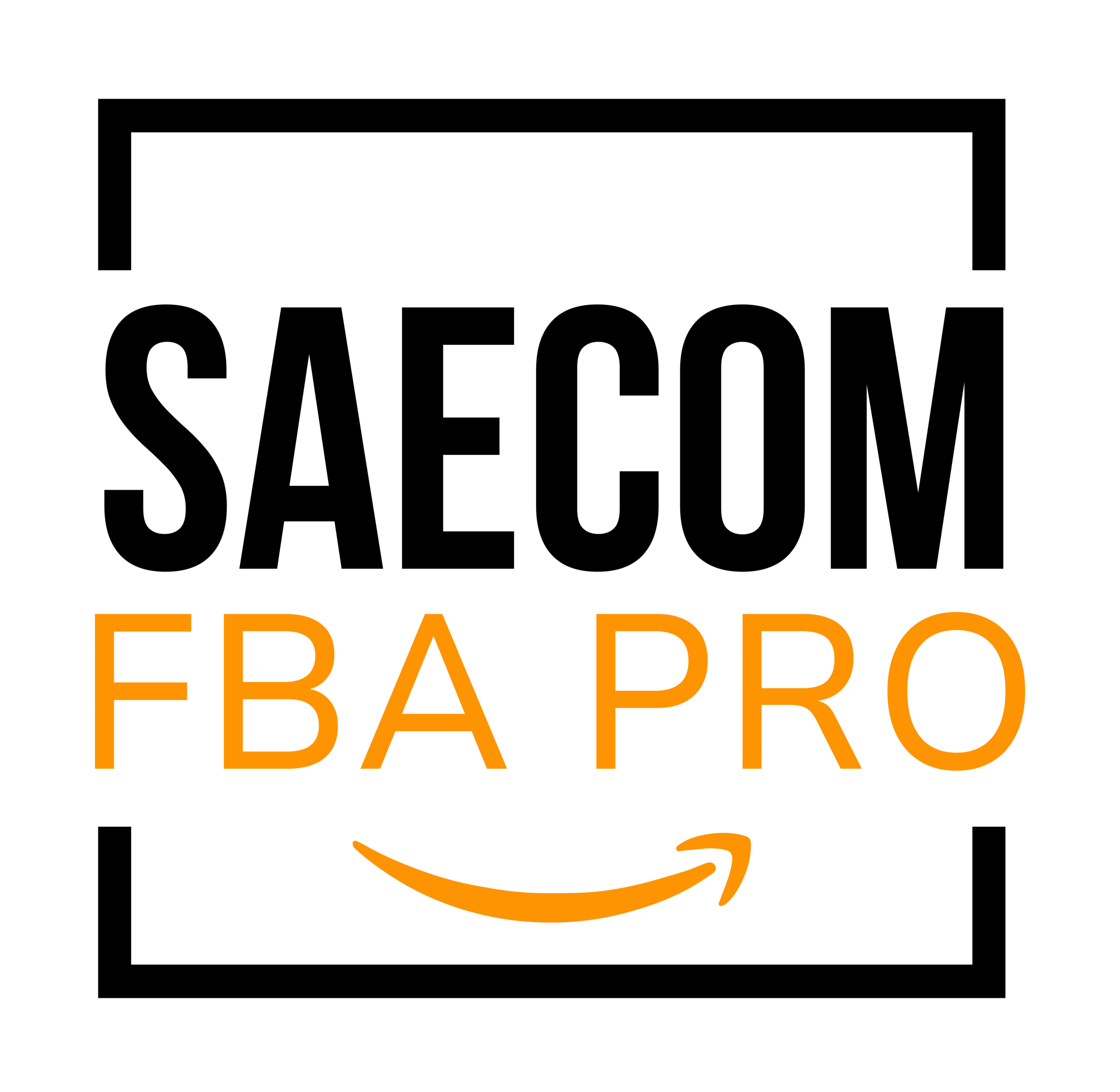Optimizing your listings By Amazon Expert - Amazon SEO practices
Best Amazon SEO practices
1. Comprehensive Keyword Research
Comprehensive keyword research for Amazon entails a deep dive into the search terms and phrases potential buyers use when looking for products similar to yours. This process goes far beyond simply finding high-volume keywords; it encompasses understanding the intent behind those searches and identifying long-tail keywords that could be your secret weapon.
Tools like Amazon’s own “Brand Analytics” can provide a wealth of data. Still, for more comprehensive insights, third-party keywords research tools such as Helium 10, Jungle Scout come into play. These tools help uncover valuable keywords, analyze their search volume, and assess their competitiveness. They also offer crucial metrics like Click-Through Rate (CTR) and Cost Per Click (CPC), which are essential for optimizing Amazon Advertising campaigns.
By employing these tools and conducting meticulous keyword research, Amazon sellers can gain profound insights into their potential customers’ behavior. Armed with this knowledge, they can craft product listings, titles, and descriptions that resonate with shoppers and align perfectly with their search queries. This not only enhances organic discoverability but also improves the chances of winning the coveted “Buy Box.”
Furthermore, a comprehensive keyword research strategy for Amazon allows sellers to spot untapped opportunities and competitive gaps. Leveraging these insights, they can refine their inventory selection, pricing strategies, and even product bundling to outperform the competition.
In the fast-paced world of e-commerce, where success can often be measured by clicks and conversions, comprehensive keyword research is the compass guiding sellers toward higher traffic, increased sales, and sustainable growth on Amazon’s vast digital terrain. Embracing the right tools for the job can make all the difference in this exciting and dynamic marketplace.
2. Strategic SEO Keyword Placement
Imagine you are selling a premium brand of organic coffee beans on Amazon. Your primary keyword focus is “organic coffee beans.” Here’s how strategic keyword placement could be applied:
Product Title:
Title: “[Your Brand] Premium Organic Coffee Beans – Freshly Roasted Arabica Beans”
Bullet Points (Features):
Bullet Point 1: “100% Organic Arabica Coffee Beans”
Bullet Point 2: “Rich and Smooth Flavor Profile”
Bullet Point 3: “Freshly Roasted for Maximum Freshness”
Bullet Point 4: “Ideal for French Press, Drip, or Espresso”
Bullet Point 5: “Ethically Sourced and Environmentally Friendly”
Product Description: In the opening sentence: “Introducing [Your Brand] Premium Organic Coffee Beans, the epitome of freshness and flavor.”
Throughout the description: Naturally incorporate variations of your primary keyword, such as “organic Arabica beans” or “best coffee for French press.”
Backend Search Terms: Include relevant search terms like “organic coffee beans,” “premium coffee,” and other related keywords in the backend of your Amazon Seller Central account.
Images and Alt Text: Ensure high-quality images of your product and use descriptive alt text like “Bag of [Your Brand] Organic Coffee Beans – 12 oz.”
URL and Brand Name: Use a URL that includes the primary keyword, such as “www.amazon.com/[Your-Brand]-Organic-Coffee-Beans.” If your brand name naturally incorporates relevant keywords, prominently display it.
Customer Reviews: Encourage satisfied customers to leave reviews mentioning “organic coffee beans” and your brand’s quality.
Sponsored Products: Run Amazon Advertising campaigns, utilizing your primary keywords to increase visibility in search results and related product listings.
A+ Content (if available): Utilize enhanced content features to provide additional details about your product, reinforcing its organic and premium qualities.
Competitor Analysis: Monitor your competitors’ listings and adjust your keyword strategy as needed to maintain competitiveness.
Strategically placing your primary keyword and relevant variations throughout your Amazon product listing will signal to Amazon’s search algorithm that your product is relevant to users searching for “organic coffee beans.” This increases the likelihood of your product appearing in search results, driving more organic traffic to your listing, and, ideally, leading to increased sales on Amazon.
3. Compelling Product Title
Craft a clear and concise product title that includes your main keywords, brand name, and key features. Aim to create a title that informs and entices potential buyers within Amazon’s character limit.
4. Informative Bullet Points
Utilize the bullet points to highlight key features, benefits, and specifications of your product. Incorporate relevant keywords naturally while focusing on readability and conveying the product’s unique value.
5. Engaging Product Description
Write a compelling and detailed product description that provides additional information about the product’s benefits, usage, and features. This is a great opportunity to include long-tail keywords and answer potential buyer questions.
6. High-Quality Images
Use high-resolution images that showcase your product from different angles. High-quality images enhance the user experience, build trust, and can encourage more clicks and conversions.
7. Relevant Backend Keywords at search engine
In the backend search terms or backend keywords section, add relevant keywords that may not fit naturally in the visible parts of your listing. This can expand your listing’s discoverability.
8. Accurate and Specific Product Category
Select the most appropriate product category to ensure your listing appears in relevant search results. Choosing the correct category enhances visibility among your target audience.
9. Product Variations and Parent-Child Listings
If you offer different variations of a product (e.g., size, color), use Amazon’s parent-child listing feature to group them. This improves the user experience and consolidates reviews and rankings.
10. Encourage Genuine Reviews
Positive reviews contribute to your listing’s credibility and ranking. Encourage buyers to leave genuine reviews by providing excellent customer service and delivering quality products.
11. Monitor and Adapt best optimization
Regularly monitor your listing’s performance, track relevant metrics, and adjust your strategy based on insights. Amazon’s algorithms evolve, so staying adaptable is crucial.
12. Utilize Enhanced Brand Content (EBC) or A+ Content
If eligible, use Enhanced Brand Content (for brand registered sellers) or A+ Content (for Vendor Central) to enhance your listing with additional images, formatted text, and storytelling elements.
13. Consider Amazon Advertising
Pair your SEO efforts with Amazon Advertising (PPC) to increase visibility for specific keywords and products. A well-optimized listing can lead to better ad performance.
By following these best practices, you can create Amazon listings that are not only optimized for SEO but also engage and convert potential customers effectively.
About the Author Saad Ahmed
Saad has been providing Amazon Consultancy Services for the past 6 years, and have helped multiple brands to grow from Zero sales to 6 and 7 figures/Month. He runs amazon agency SAECOM FBA Pro. He and his team are currently managing over 50 Brands.
Here are few links that can be used to reach him out and attain his services:
Website: www.saecomfbapro.com
Upwork: https://www.upwork.com/freelancers/saadahmed
LinkedIn: https://www.linkedin.com/in/saadahmed57/
Contact Email: saad@saecomfbapro.com


